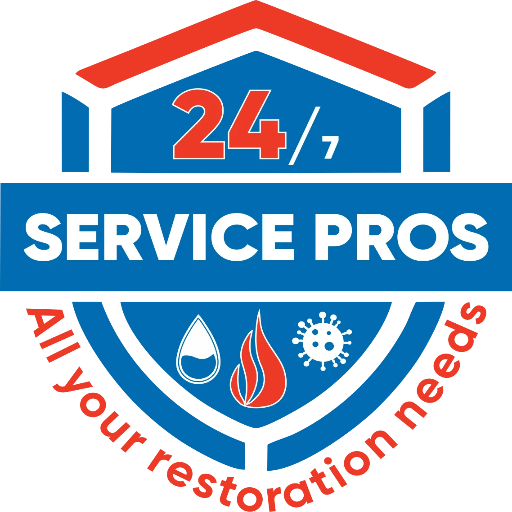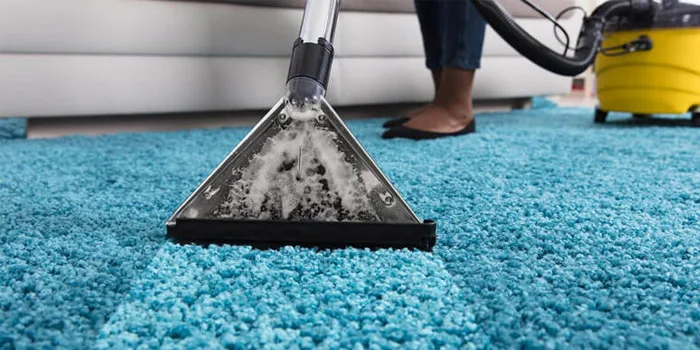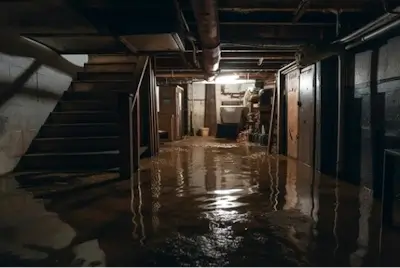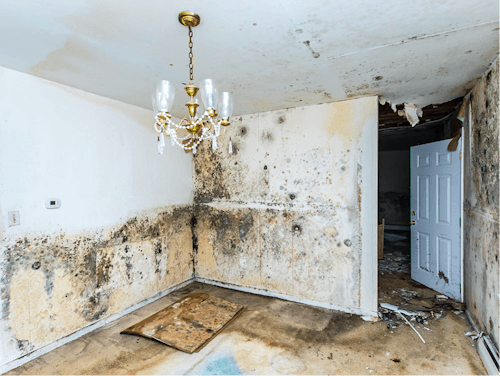Moisture that gets behind tiles causes water damage to the walls. It can damage the drywall backing which results in rotting of adhesive material as well. If water damage is not controlled timely, it can cause the tiles to begin to fall off.
Additionally, water damage behind your tiles can cause growth and spread of mold and mildew. If not restored timely, the drastic effects of water damage can lead to health problems, infestation, and contamination.
If you see any signs of water damage behind the shower tiles, contact 24/7 Service Pros for water damage restoration. If you leave it unattended for long, it will cause more damage since water damage happens over a long period of time. By the time you notice it, it’s already too late.
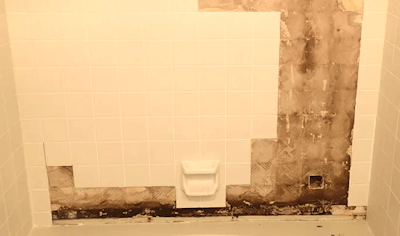
What Happens if Water Damage Gets Behind the Shower Tiles?
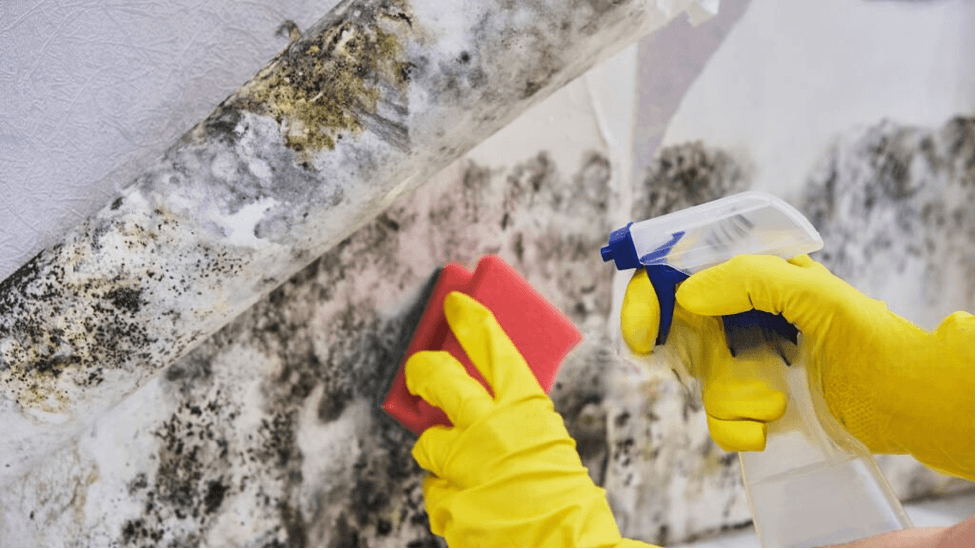
When water starts collecting behind wall tiles, moisture starts to gradually spread across the backboard. Tiles are attached to the surface of the backboard and there’s no way for water to evaporate naturally.
When the materials behind the tiles have no way of drying, it leads to water damage that gradually breaks down everything coming in contact.
Possible Problems Caused by Water Leaks Behind Shower Walls
- Cracks in the grout, discoloration of the tile or sealant, or uneven tile grout
- Tiles gradually loosen and are not in alignment with the rest of the tiles
- Pieces of tiles start chipping off from the bathroom walls
- Caulk is missing or broken at shower base and wall tiles
- Strong, damp, musty odors that don’t go away
- Mold and mildew growth on the tile surface or caulk
Signs of Water Damage Behind Tiles
Since it’s impossible to see anything happening behind the tiles, look for signs of water damage on the surface. There are several ways you can determine if something is going on. One way to find out is the excessive water buildup around the tub or shower area. This happens if there’s severe water damage under the tiles.
1. Cracks, or discoloration in tile grout
When looking for signs of water damage behind shower tiles, see if there are any cracks or holes in the grout lines between the wall or floor tiles. If the grout is uneven or discolored, it’s because of the water damage.
At this point, you should take steps towards water damage restoration.
2. Tiles coming away from the shower wall
If your tiles are loosening up, it’s a sign that the wall behind has deteriorated because of water damage. Tap and press the tiles to see if they’re fixed or not. Loose tiles indicate that there’s moisture buildup underneath.
Either the grout has broken or the drywall is not waterproof. You will need to replace the drywall and any other material that’s damaged.
3. Peeling caulk around bottom tiles and the shower base
Water damage is primarily caused by peeling or broken caulk. While tiles are 100% waterproof, the caulk isn’t. If the caulk is not properly sealed, it will allow water seepage under the tiles. Once the water gets trapped under the tiles, it has no way to evaporate or drain.
So, pay close attention to caulk and grout. If anything is broken, peeling or cracked, it’s causing water damage.
4. Damp odors that don’t go away with cleaning
If you notice a damp, musty smell in your shower that never goes away, it’s because of the moisture buildup and water damage behind the walls. Cement-based grouts are quite porous and if not sealed properly, then water may start penetrating underneath.
The trapped moisture underneath, or mold, is the cause of this musty damp smell. If no amount of ventilation helps with this problem, get water damage restoration services immediately.
5. Mold or walls around the titles
Another sign that the water damage has wreaked havoc behind shower tiles is the spread of mold. If you see mold on walls above or around the tiles, you need water damage restoration services immediately.
How to Fix Water Damaged Shower Wall
The first step for water damage restoration is the evaluation of the damage. While you should always seek professional help, you can do a few things yourself if you have the right gear and skills for water damage restoration.
Note: Before you begin, make sure you have proper safety gloves, goggles, mask, and protective coveralls. Mind the debris as it can injure you if you’re not cautious.
Once you have evaluated the damage and have the right tools for repair, you can start by following the given steps:
Remove the shower tiles from the water damaged area
Use a putty knife or a chisel to remove the loose tiles first. Look for signs of water damage underneath. Gradually peel away tiles in the surrounding area till the damage spread stops. Prevent tiles from falling and breaking if you intend to reuse the same tiles after restoring the wall. Remove the base trim as well.
Cut out the damaged drywall
Once you have removed the tiles, cut out the damaged drywall with a sharp cutter. Take out the water damaged area and remove any screws or nails that remain in the exposed studs. If you see any rotted studs, remove them as well.
Install new drywall
Measure the area of the drywall that you have cut out. Measure the thickness of the previous drywall, it should be consistent with the new one. Cut a new piece of drywall to size, and secure with drywall screws.
Fill in screw holes and gaps
Use drywall mud to fill screw holes and fill up the gaps between the new and existing drywall. Apply drywall tape over the mud, and then reapply another thin layer of drywall mud over the tape. When it has dried out completely, smooth out the filling with sandpaper.
Repeat this process until the surface is even and smooth. There should be no bumps or depressions.
Reattach the tiles and finish
Once you have restored the water damaged drywall, it’s time to fit a new base trim. Apply the adhesive material to the drywall and reattach the cleaned and dried tiles, fill the gaps with grout.
What to Do if There is Mold Behind Water Damaged Shower Tiles?
After removing the tiles, if you see any mold, it’s advised to seek professional help. Dealing with mold without prior professional training is dangerous. Additionally, you might not be able to prevent mold from spreading or coming back again. Hence, any sign of mold should be reported to the trained professionals.
You can contact 24/7 Service Pros for mold removal and water damage restoration.
Conclusion
Water damage behind shower tiles can be a big issue if not dealt with timely. Houses that have not been renovated for years can deteriorate over time. Look for signs of any water damage by examining your bathroom walls carefully.
Take preventive measures by keeping the tiles clean, dry, and ventilated. In case of damage, it is advised to call the right service providers who have experts dealing with water damage restoration.
Which Areas We Serve in South Florida?
- Hollywood
- Davie
- Miami Beach
- Weston
- Hallandale Beach
- North Miami Beach
- Sunrise
- Tamarac
- Coconut Creek
- Fort Lauderdale
- Miami
- Boca Raton
- Hialeah
- Margate
- Pembrock Pines
- Dania Beach
- Lauderhill
- Delray Beach
- Pompano Beach
- Deerfield Beach
- Coral Springs
- Plantation
- Doral
- Aventura
- Miramar
- Sunny Isles Beach
